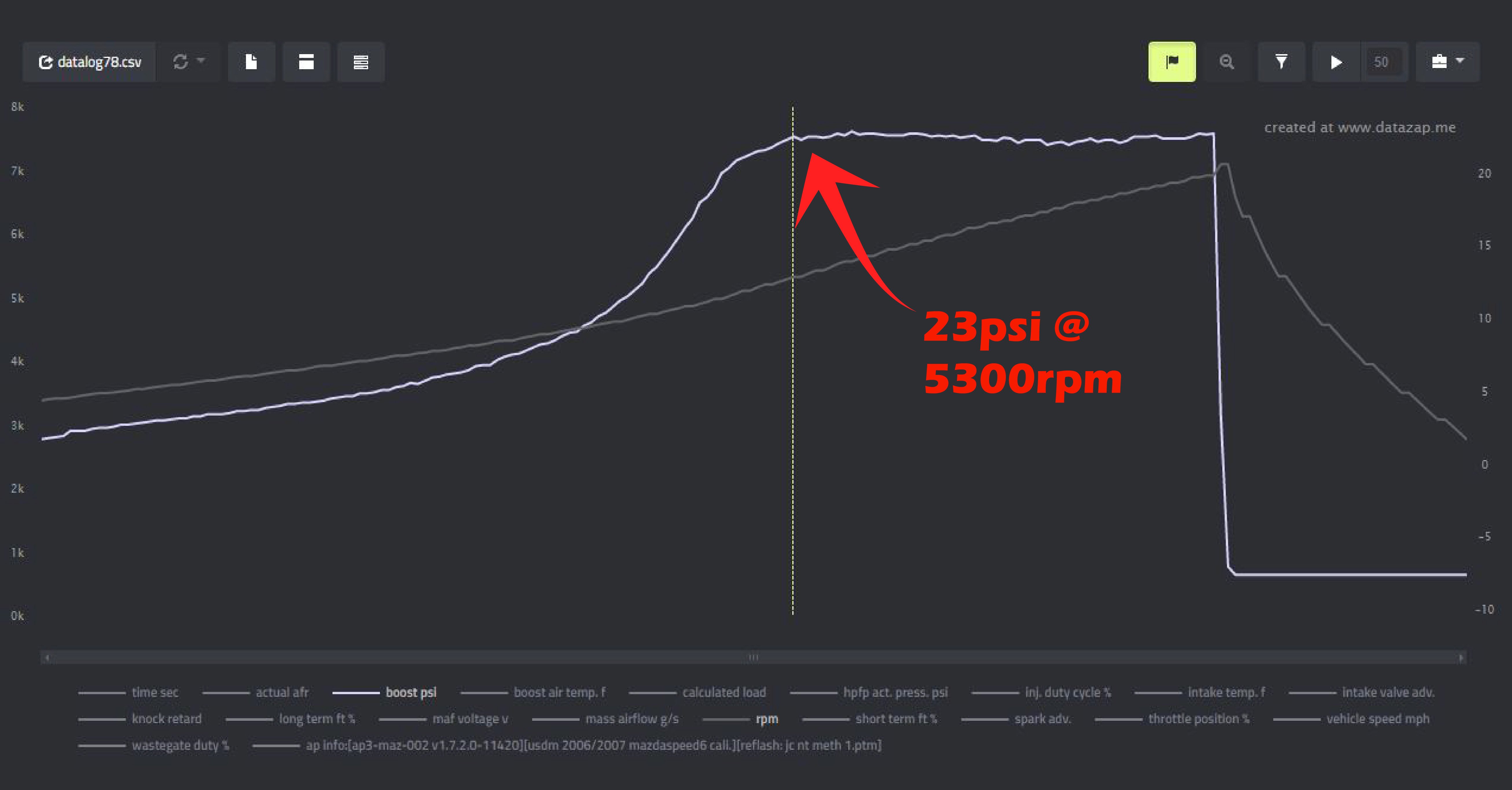
First of all, for those of you that don’t know, an intercooler, or aftercooler, is a heat exchanger that helps to cool air that has been compressed by a supercharger or turbocharger. In a turbocharged application, the intercooler goes between the compressor and the throttle body. Since pressure and temperature are proportional, as higher pressures are achieved, higher temperatures will follow.
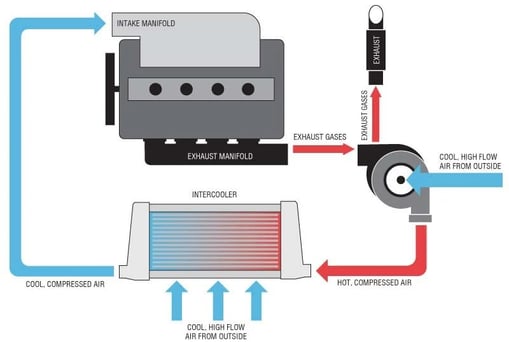
Why is Cold Air Better?
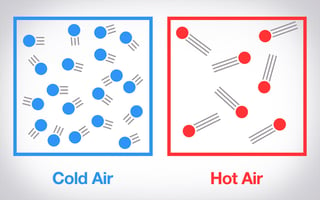 The biggest reason is because colder air is denser, and the denser the air is, the more we can fit into the cylinders. Because the air coming out of the compressor is so hot, it is important to cool it back down thereby increasing the amount of oxygen per unit volume. And we all know that more oxygen equals more power.
The biggest reason is because colder air is denser, and the denser the air is, the more we can fit into the cylinders. Because the air coming out of the compressor is so hot, it is important to cool it back down thereby increasing the amount of oxygen per unit volume. And we all know that more oxygen equals more power.
Another reason you want to cool that air is to reduce cylinder temperatures. Higher cylinder temperatures make it easier for the air/fuel mixture to ignite and can cause uneven combustion or detonation (knock).
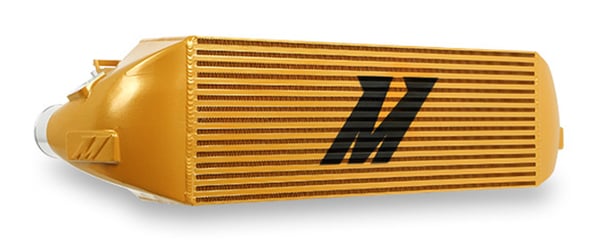
What makes one intercooler better than another?
Nowadays, pretty much every turbocharged vehicle comes with an intercooler from the factory. However, the OEM engineers are shackled by cost, size, and weight. Because of this, they will use an intercooler that fits the minimum requirements to operate at the factory boost levels and airflow. Most of these OEM intercoolers are very thin, use plastic end tanks, and in some cases, they are even located in areas of convenience rather than max performance.
For instance, both the WRX and STI, as well as the Mazdaspeed’s 3 and 6, use a Top Mount Intercooler (TMIC). The reason for this is that a TMIC will be more responsive than a Front Mount Intercooler (FMIC) due to the shorter piping, and lower volume of the system. This is also much more cost effective, and easier to package.
The downside to the TMIC is that it is very thin and will heat soak quickly. This is made even worse by its location on top of the engine where heat is constantly rising up at stop lights. At a certain point, the intercooler will be almost useless due to the heat retention. Once the TMIC becomes heat-soaked, it will need to spend some time cooling down in order to get it back into an operational range.
But just because the intercooler is located in the front from the factory doesn’t mean it is any better. As we have seen with the Focus ST, the factory FMIC will climb to temps up in the 160 to 180 range quickly. The reason it does this has to do with the core design and placement. It is placed behind the restrictive factory grill shutter system, and it is a very thin and very short core. Because it has such small surface area, it can’t exchange the heat as quickly and gets heat soaked very fast.
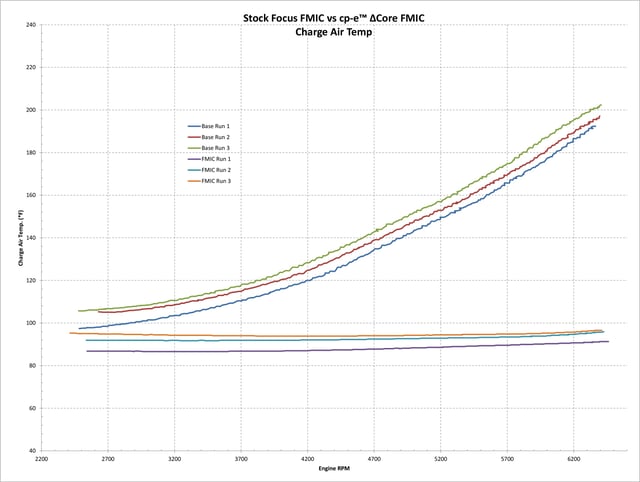 In this graph, you can see the cp-e Delat Core FMIC Compared to the stock FMIC on a Focus ST.
In this graph, you can see the cp-e Delat Core FMIC Compared to the stock FMIC on a Focus ST.
Speaking of surface area, it is one of the more important aspects of intercooler design. However, it isn’t specifically referencing the visible face of the intercooler. You also have, core design, cooling fin structure, cooling fin density, and end tank construction as well. All these things can add to the cooling surface area and play a big role in how an intercooler will perform.
Core Design Explained
Let’s start with core design. There are two main types of intercooler core design, Tube and Fin, and Bar-and-Plate. Tube and Fin is common in the OEM because it is cheaper and easier to manufacture. It also allows for plenty of airflow through the core which aids in cooling with other things that might be located behind the intercooler, such as radiators and AC Condensers. Tube and Fin intercoolers also typically have lower pressure drop across the core which helps with throttle response. Bar-and-Plate Intercoolers are usually preferred by the aftermarket for their higher cooling capabilities. A well designed Bar-and-Plate intercooler can cool better than a Tube and Fin intercooler while suffering minimally, if any, higher pressure drop across the core.
After you’ve settled on a core design, you should look at the structure of the design. The fin density and design is the biggest factor in intercooler cooling capability. Low density fins will not cool as efficiently as a higher density design. However, if you go too dense, you will increase cooling ability at the cost of increased pressure drop.
 Tube and Fin Low Density Medium Density High Density
Tube and Fin Low Density Medium Density High Density
A good example of this is found between the design of the Treadstone TR8 and the Treadstone TR8L. The TR8 is has a higher density internal fin structure which allows it to cool more efficiently than the TR8L. However, because the TR8L has a less dense fin structure, it features less pressure drop. Therefore, the TR8 is designed for higher boost applications where pressure drop isn’t as big of an issue and heat management is more important. The TR8L is better suited for low boost applications with large turbos that have much higher flow.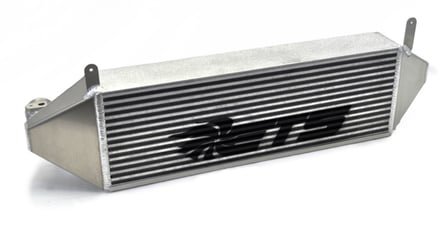
Which Intercooler is Best for Me?
The answer to this question is application. You have to match the intercooler to your specific application. A cheap intercooler core that does not have good fin structure will not be much of an upgrade and is best suited to a car that won’t need a lot of cooling. If you are running high boost, you will need an intercooler that can support it and keep the air cool. If you are not heating up that air with higher pressure, then look for a core that can flow more air with less pressure drop
I'm the founder of Edge Autosport and I remember first getting into cars in high school. I read all the magazines, bought a bunch of technical books, and finally got to start wrenching around the age of 19. I really enjoy modding and being able to live out a passion is truly awesome. I wouldn't change a thing.
Topics:


